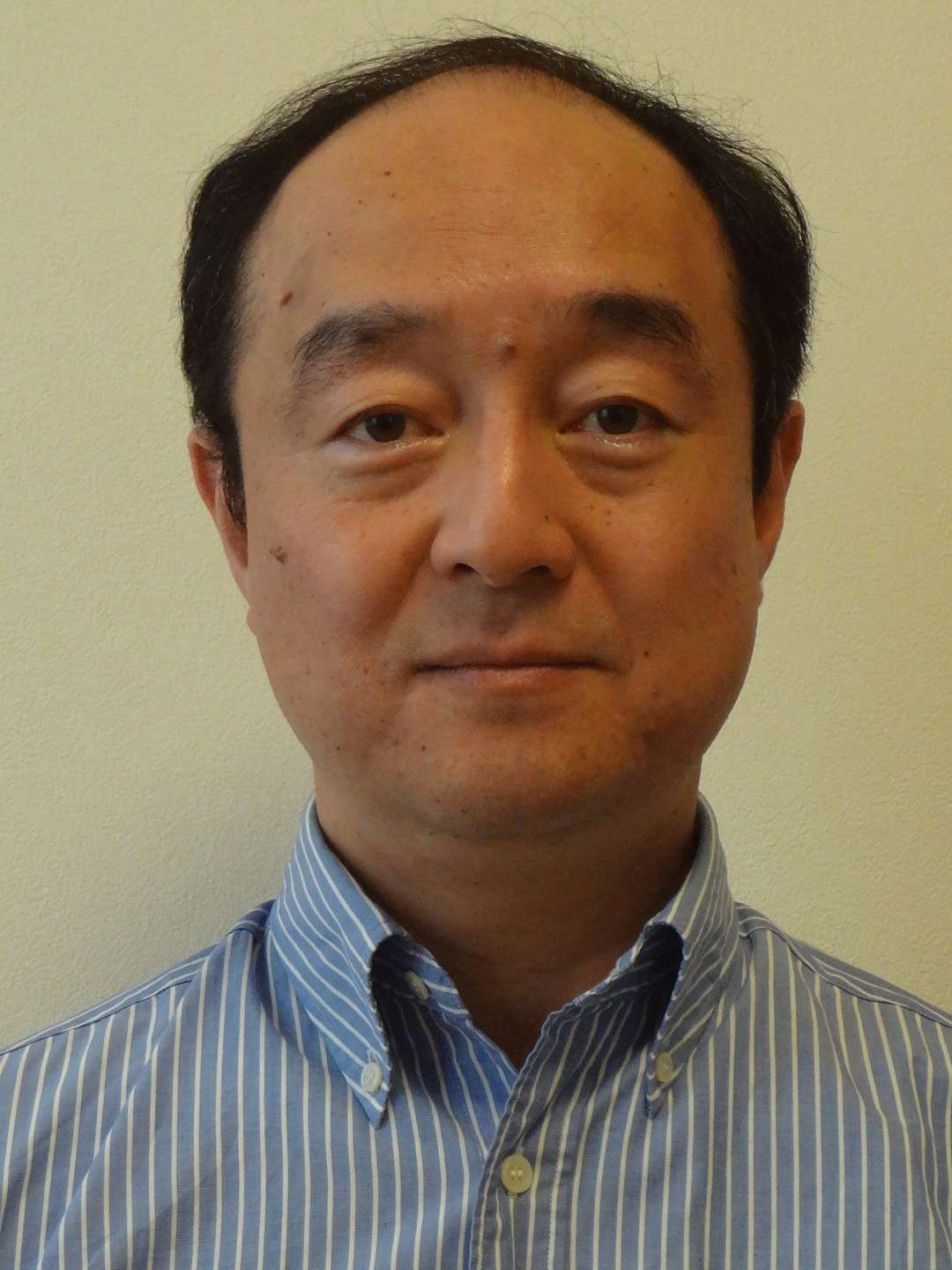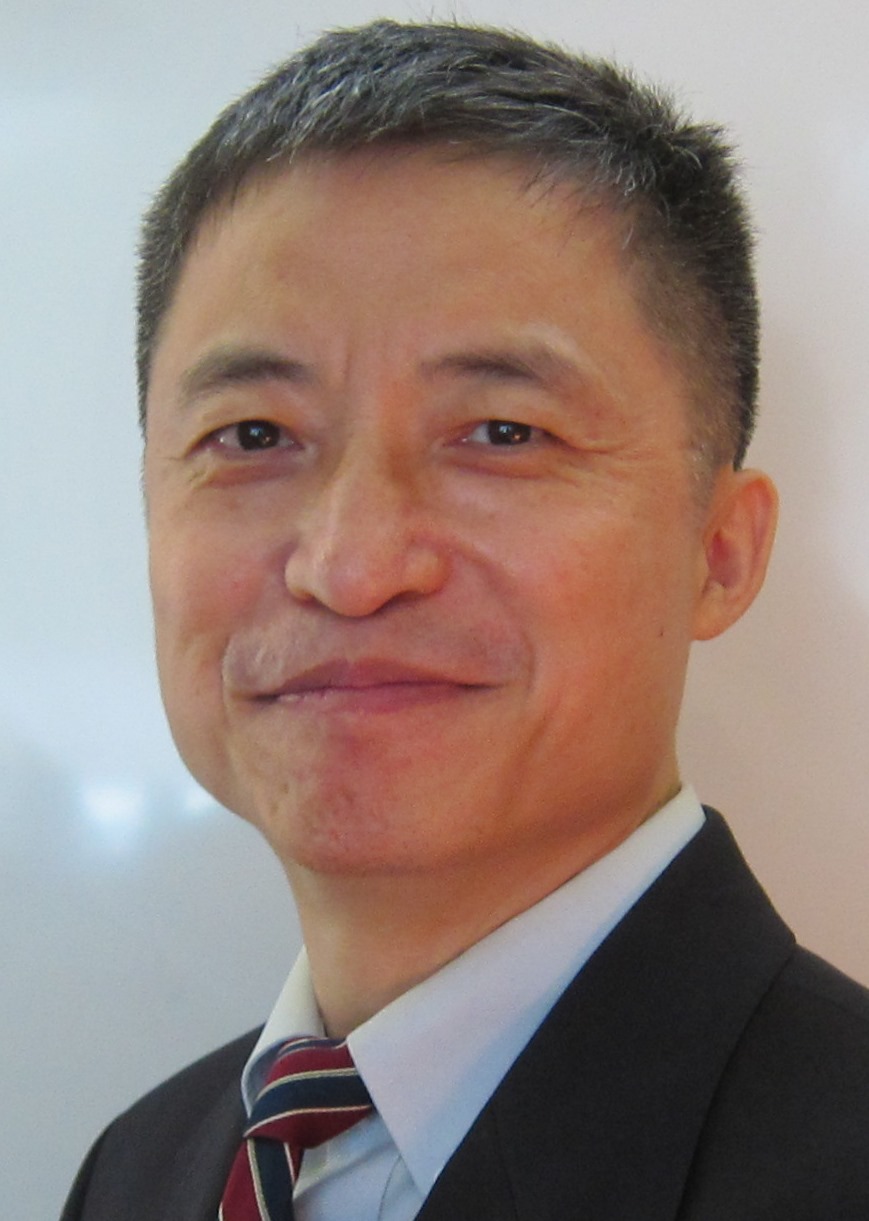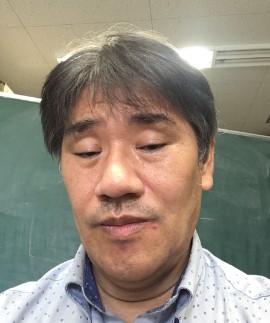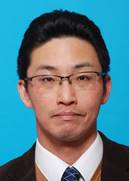|
 Keynote Lectures (under expansion!) Keynote Lectures (under expansion!)
|
|
|

|
|
Yusaku
Fujii, Ph.D
Professor, Gunma University (Japan)
President, (NPO)
The e-JIKEI Network Promotion Institute (Japan)
|
[Title]
Distancing-Free Mask as a Social Infrastructure that Eliminates Lockdown
[Abstract]
“Distancing-Free
Mask”, which eliminates the lock down, and the social infrastructure using
this mask will be discussed. This mask simultaneously achieves the four
items, (1) complete screening of viruses, (2) lightweight body, (3) easy
breathing, and (4) inexpensive manufacturing costs, at a high level by
precise control of pressure and flow rate inside the helmet. The wearer of
this mask, just like the antibody carrier, cannot be infected itself with the
virus, nor infect others with the virus. (Japanese Patent Application
2020-113097). Currently, a combination of "new lifestyle" and
"Lockdown (= going out control, behavior control, business control,
economic regulation)" is being taken around the world. Since there is no
prospect of developing a vaccine or treatment method, there is no prospect of
leaving the current situation. Distributing the "Distance-Free
Mask" to each citizen means having a simple and reliable means of
converging the infection. Even under the worst infection spread situation,
people can go out as long as they wear "Distance-Free Mask".
Organizers of events such as the Tokyo Olympics need only take measures in
anticipation of situations where masks are mandatory.
The
present status and the future prospect of Distancing-Free Mask are discussed
in this keynote.
[Reference]
Save the world by distributing Distancing-Free Mask!
http://www.e-jikei.org/site/Perfect_Mask.htm
|
|
|

|
|
Mitra
Djamal, Dr.-Ing.
Professor, Institut Teknologi Bandung (Indonesia)
Vice Rector for
Academic, Institut Teknologi Sumatera (Indonesia)
President, Physical
Society of Indonesia (PSI), (Indonesia)
|
[Title]
Surface Plasmon Resonance and Its Application for Biosensing
[Abstract]
The use of surface plasmon resonance (SPR) for biosensor is growing in
popularity, especially in fundamental biological studies, health research,
medicine, clinical diagnosis, as well as environment and agriculture
monitoring. SPR enable qualitative and quantitative measurements of
biomolecular interactions in real time without labeling. Currently, the
development of SPR as biosensor is focused on compact, inexpensive and
sensitive designs. The development of micro to nano sized fabrication
technology and integration of opto-electronic components is compatible with
SPR. We will focus on the progress we made over the past 4 years. Simulation,
fabrication, and applications that have been developed in our laboratory.
[References]
1. N. S. Aminah, C. Themistos,Hendro, R. Hidayat, M. Djamal, and B M A
Rahman, “Evolution of Surface Plasmon Supermodes in Metal-Clad microfiber and
its Potential for Biosensing,” Journal of Lightwave Technology, Vol. 35(21),
pp. 4684-4691, 2017.
2. AH Ulum, L Destarina, N.S. Aminah, N Srisuai, S Boonruang, N Nuntawong, M
Horprathum, M Djamal, “Au-Coated PDMS grating for SERS substrate: Comparison
of two different grating depths”, Journal of Physics: Conference Series,
1428(012036), 2020.
3. A H Ulum,L Destarina, N.S. Aminah,N Srisuai,S Boonruang,N Nuntawong,M
Horprathum,and M Djamal, “Optimization of sputtered Au film on grating
structure as (SERS) substrate for detection of pesticide”, Journal of
Physics: Conference Series, 1428(012035), 2020.
|
|
|

|
|
Haruo
Kobayashi, Ph.D
Professor, Gunma University (Japan)
|
[Title]
Challenges of Analog and Mixed-Signal IC Testing Technologies in Digital
Explosion Era
[Abstract]
This talk introduces production testing research results for analog and
mixed-signal IC (Integrated Circuit) performed at the author's laboratory,
such as operational amplifier, ADC, sampling circuit, timing, related testing
technologies. Notice that production testing and measurement /
characterization for ICs are similar but different, and this paper introduces
the former. The analog / mixed-signal testing plays a very important role in
achieving both reliability and low cost for IoT and automotive systems. It
also is a big technological challenge because there is no general method, but
it requires state-of-the-art combination and optimization of a wide variety
of technologies including circuit and system design as well as signal
processing, control and measurement algorithms. Their overview including
future technology challenges will be presented.
|
|
|

|
|
Osamu
Kamatani, Ph.D
Professor, Professional University of Information and Management for
Innovation (Japan)
|
[Title]
Application of RDF structured data for innovative context aware services
[Abstract]
Smart phone devices and the relevant application services are widespread and
expanding. Users can access their necessary information anytime, anywhere,
however the information to the users is mostly provided as a general
information rather than a user specific information. In order to provide such
user specific information services, it is necessary to obtain the context of
the user and provide services tailored to that context. This presentation
reviews future technologies which can support the context aware information
retrieval and communication services. First, we discuss the need for
structured data and show that RDF (Resource Description Framework) may be a
potential enabler. We will also show examples of RDF use in network
operational management, such as network node topology control and an
inference method for fault propagation based on network ontology.
|
|
|

|
|
Shu Dong
Wei, Ph.D
Associate Professor, Nanyang Technological University (Singapore)
|
[Title]
Distancing-Free mask Projects in NTU
[Abstract]
Prototypes of “Distancing-Free Mask” that can almost-completely prevent
virus transmission are being developed by Yusaku Fujii, Seiji Hashimoto, and
Akihiro Takita of Gunma University. Once this is mass produced and
distributed to each citizen, lockdown is unnecessary. The wearer of this
mask, like the antibody carrier, can neither be infected by the virus nor
infect others. If the mask is worn by all the people at the same time when
the infection spreads, the infection will be easily and reliably controlled.
The projects in Nanyang Technological University aiming to adapt and improve
upon these masks to the conditions of Singapore are described. These projects
aim to minimize the fogging up and improve the vision of wearers, to allow
wearers to hear and to be heard, to enjoy drink and food with mask on, and to
be portable.
|
|
|

|
|
Yutaka
Kawahara, Ph.D
Professor, Gunma University (Japan)
|
[Title]
Spinning System of Bombyx mori Silkworm
[Abstract]
We have studied the influence of the interaction between fibroin and sericin
on the crystal modification directly in the lyophilized silk gland of the
fully grown larva of Bombyx mori. In the posterior silk gland, the fibroin
formed a silk1 structure according to the polymorphism property of fibroin.
In the middle silk gland where sericin P fraction is to be secreted, fibroin
showed silk2 crystal diffraction. Following the secretion of sericin P
fraction, the sericin M fraction has become secreted indicated by definite
silk1 crystal diffraction. However, silk2 crystal diffraction remained almost
unchanged, which means that sericin M fraction has a potential to regulate
the crystal transformation of fibroin. Furthermore, the influence of the
modulation of spinning process or the addition of metal ions into a liquid
silk aqueous solution in flow state on the formation of fiber structure was
investigated.
|
|
|

|
|
Takao
Yamaguchi, Ph.D
Professor, Gunma University (Japan)
|
[Title]
Acoustic Black Hole in Some Kinds of Structures
[Abstract]
A fast finite element method is proposed to compute dynamic properties for
complicated systems having elastic/viscoelastic/porous structures with
acoustic black holes. The acoustic black hole proposed by Krylov is plates
having an edge where its thickness decreases sharply as a power function of
the thickness. And on the small area of the edge, viscoelastic damping
material is laminated. By using this structure, flexural waves cannot be
reflected at the edge with the acoustic black holes.
We proposed expressions of modal damping by applying asymptotic expansion to
complex eigenvalue problem of the dynamics systems. We can analyze modal
couplings in damping of the complicated dynamics systems. This method is
named as MSKE (Modal Strain and Kinetic Energy) Method. This proposed method
can be applied to calculate impact responses of complicated structure
including not only elastic/viscoelastic/porous material but also the acoustic
black holes. We applied this method to obtain responses for some kinds of
structures with the acoustic black holes.
|
|
|

|
|
Mitsunori
Mizumachi, Ph.D
Associate Professor, Kyushu Institute of Technology (Japan)
|
[Title]
Acoustic beamforming for selective listening under noisy environments
[Abstract]
Acoustic signals are fragile against interferences such as background noises
and reverberation. Human auditory systems cleverly achieve selective
listening, that is, noise reduction and dereverberation. On the other hand,
it is extremely difficult to enhance the target signal by a computer without
any constraints. Beamforming with a microphone array is one of the possible
solutions of selective listening. The microphone array consists of
spatially-distributed multiple microphones, which capture the mixture of the
acoustic signals generated by each sound source. The beamformer can be
designed in various manners. In this talk, the state-of-the-art nonlinear
acoustic beamformer is introduced besides the traditional linear beamformer.
The nonlinear beamformer efficiently optimizes its beampattern using an
artificial neural network, and the analytically-designed linear beamformer
provides the distortion-free target signal. Some ideas of achieving broadband
beamforming are also introduced to deal with wideband acoustic signals in the
real world.
|
|
|

|
|
Yuki
Aoki, Ph.D
Associate Professor, Gunma University (Japan)
|
[Title]
Design of the development environment suitable for IoT/BD/AI education for
high school students and above
[Abstract]
Various educational boards have been developed for IoT education, and
establishing an education system including AI/BD using them is important. In
this study, we constructed a system environment for IoT/AI/BD education by
using Raspberry Pi as an edge computer and Jupyter. The developed system enables
learning of IoT / AI / BD only with Python from a web browser. This system
does not depend on the learner's PC environment and does not require Linux
operation knowledge.
|
|
|

|
|
Shinichi
Maruyama, Ph.D
Professor, Gunma University (Japan)
|
[Title]
Analysis on vibrations of thin-walled continuous body
[Abstract]
Thin-walled elements, such as beams, arches, plates and shell-panels are
widely used in recent downsized and light-weighted machines. Since flat
beams and plates have low rigidity, curved elements such as arches
and shell-panels are widely used. Rigidity of the curved elements are fairly
higher than that of the flat elements, because lateral deflection is coupled
to in-plane deflection which enhance the rigidity of the curved structures.
Furthermore, when large amplitude vibrations are generated in the flat or
curved thin elements due to resonance, the lateral deflection has nonlinear
coupling with the in-plane deformation which results in complex nonlinear
vibration responses such as, subharmonic resonance, super harmonic response, internal
resonance and chaotic vibrations. Recently, shapes of structural elements
becomes more and more complex, thus analytical procedures are required to
compute vibrations of such complex-shaped elements, precisely considering
linear or nonlinear couplings between deflection and in-plane deformation
with low computational costs. In this lecture, some recent topics in analysis
on vibrations of thin-walled structural elements: (1) nonlinear vibration
analysis on beams with variable cross section, (2) linear vibration analysis
on rectangular or annular plates dividing finite segments with
higher-order-differentiable mode function, and (3) vibration analysis on
shell-panels including clamped edges.
[Keywords]
Nonlinear Vibrations, Vibrations of flexible structures, Vibrations Analysis
|
|
|

|
|
Yukinori
Nakamura, Ph. D
Senior Assistant Professor, Okayama University (Japan)
|
[Title]
State and Parameter Estimation and Its Application to Mechatronic Systems
[Abstract]
The estimation of states or parameters is effective in terms of sensor
reduction. Due to this, various estimation algorithms have been actively
studied. One approach for the estimation is to utilize the mathematical model
of plants. However, in practice, mechatronic systems include nonlinearity, which
affects estimation accuracy. This lecture introduces state and parameter
estimation approaches and their implementation methods for mechatronic
systems. We will show how to estimate the inner pressure of pneumatic
vibration isolators over a network. For the estimation of the inner pressure,
particle filter with a time stamp is employed. Also, we will explain the
parameter estimation of positioning stages with particle swarm optimization.
To shorten the time of estimation, the placement of particles is determined
by considering the nominal model of the positioning stages.
|
|
|

|
|
Hiroshi
Sakurai, Ph. D
Professor, Gunma University (Japan)
|
[Title]
Quantitative analysis of light elements by high energy X-rays
[Abstract]
High energy X-rays are applied to imaging techniques because of their high
transmittance. X-ray computed tomography (CT) imaging techniques are widely
applied for medical diagnosis. X-ray Compton scattering imaging (or X-ray
back scattering imaging) techniques are applied for non-destructive testing
(NDT) and security. These imaging techniques use X-ray intensity contrast,
which is caused by characteristic attenuation or scattering of materials.
However it is not easy to get quantitative information from the solely X-ray
intensity. That is because several tens of keV do not match characteristic
electron resonance energies.
Recently we have found that
energy spectrum analysis of X-ray attenuation coefficients, which are obtained
from X-ray CT measurements, or Compton scattered X-rays can give quantitative
information of light elements. In this study we report our recent progress of
quantitative analysis of light elements by photon counting CT system and
Compton scattering imaging system.
|
|
|

|
|
Nobuaki
Nakazawa, Ph.D
Professor, Gunma University (Japan)
|
[Title]
Human Detection in Restricted Area at Construction Site
[Abstract]
In this study, we investigated the motion patterns of walking people and
moving vehicles by calculating the angle distribution of their movements
obtained with Optical Flow. In the analysis of Optical Flow, it was found
that people tended to move in various directions, while moving vehicles
tended to move in a certain direction. Based on the obtained result, we built
a system that distinguishes between the two using Neural Network. As a
result, it was possible to accurately distinguish between a person and a
moving vehicle.
Key Words:
Construction site, Feature point, Optical flow, Neural Network
|
|
|

|
|
Wei
Jiang, Ph.D
Professor, Deputy Director Office of Academic Affairs,
Yangzhou University
(China)
|
[Title]
A Cost-effective Hardware-in-the-Loop Development System for Teaching
dynamic systems of different time scales
[Abstract]
This paper proposed a low-cost Hardware-in-the-Loop (HIL) platform for
teaching and fast prototyping of dynamic circuits and systems. A dual-core
digital signal controller (DSC) based solution is proposed for the HIL
system. CPU core A, as the simulation engine, dedicates to circuit &
system simulation. The actuation and control logic are implemented in CPU
core B, which is working as the control engine. Inter-processor communication
is used to interchange variables between two CPUs. The digital-to-analog
converter and digital outputs are used to send the duty cycle and other
system state variables to the oscilloscope for users' visual feedback. Two
typical systems with fast and slow dynamics are modeled and implemented in
the simulation engine. Under the excitation generated by the control engine,
system dynamics can be observed for studying purposes. Close-loop control for
a buck converter is also demonstrated on the developed prototype, where both
input voltage and load variations performance are tested. The test results
indicate that the digital simulator can well emulate the average small signal
model of a power converter in open-loop and close-loop scenario. At the mean
time, the control parameters can be modified for system performance
evaluation and education purposes. The proposed low-cost HIL system can be
easily applied to the engineering teaching as well as fast prototype development
phase of product design.
|
|
|

|
|
Osamu
Takaki, Ph.D
Associate Professor, Gunma University (Japan)
|
[Title]
A perspective on researches on negative effects of digitalization of
society
[Abstract]
While conferring tremendous benefits to us, digitalization of society causes
various problems, as is the case with other resources or energies. On the
other hand, social changes can be divided into two classes: inevitable
changes and controllable ones. In this talk, we focus on several negative
effects of social digitalization, and characterize them from the viewpoints
of inevitable or controllable changes of society. Moreover, we consider how
to deal with controllable aspect of such negative effects.
|
|
|

|
|
Shu Dong
Wei, Ph.D
Associate Professor, Nanyang Technological University (Singapore)
|
[Title]
Promising Magnesium Alloys for Mobility and Portability
[Abstract]
This speech presents the basic characteristics of magnesium alloys, their
historical applications in civilian and military fields. Examples of
applications range from the World War II era German missiles to portable
electronics of mobile phones and tablets today. The potential as well as the
challenges for the applications of Magnesium alloys the lightest metals in
elemental form. The current project attempts to characterize the magnesium
materials mechanically under high rate of deformation in impact and
collision, with the special equipment of Split Hopkinson Pressure Bar, which
obtains the stresses of Magnesium alloys under different strain rates which
simulate the practical situation of impact, drop and collision. The talk will
also present the light Magnesium alloys under various conditions, and in
particular, at various temperatures. The high or low temperatures must be
applied to the Split Hopkinson Pressure Bars, which present some obstacles
and challenges.
|
|
|

|
|
Yusaku
Fujii, Ph.D
Professor, Gunma University (Japan)
President, (NPO)
The e-JIKEI Network Promotion Institute (Japan)
|
[Title]
Will every street be watched by camera network in the near future
[Abstract]
The proposition “Will every street be watched by camera network in the near
future?” will be discussed in the lecture. A street camera network, in which
many IP cameras are installed at a high density, similar to street lights
throughout a nation, will have a stronger positive effect in suspect tracking
and crime deterrence in the near future. On the other hand, it will also have
a stronger negative effect related to the violation of privacy of ordinary
citizens. In order to make such a stronger surveillance camera system, which
forcibly captures the images of passersby for the public interest, be
accepted as an essential social infrastructure by a society, it is necessary
for this camera system to make ordinary citizens be convinced that it is used
only for the public interest. To realize this, a new concept, in which the
abuse of a street camera network is deterred by recording and disclosing
browsing-history, is proposed.
[Reference]
Yusaku Fujii and Noriaki Yoshiura, "Will every streetlight have network cameras in the near
future?", SCIENCE, eLetters (21 October 2016) .
|
|
|













